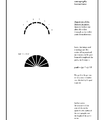Final - assignment: Difference between revisions
No edit summary |
No edit summary |
||
| Line 1: | Line 1: | ||
“They danced the geranos together as a group, one behind the other in a line, with a leader at each end. Theseus and his party first danced like this around the altar in Delos to represent their escape from the labyrinth.“ written by Pollux, a Greek lexicographer from the 2nd century AD, about the François vase (6th century BC). | |||
This work consists of a development of a new set of dance scores, using this ancient piece as a point of departure. | |||
<gallery> | <gallery> | ||
| Line 6: | Line 9: | ||
File:Final thematic2.png|Extension_joana2 | File:Final thematic2.png|Extension_joana2 | ||
</gallery> | </gallery> | ||
“Deleuze and Guattari’s definition of number as the subject of '''qualitative distribution''', rather than the tool of quantitative measurement, therefore oulines a different conception of movement as distributed parts and not directed by any central point (or conscious thought). Movement, in other words, as something that occurs in the body (rather than being performed by it)“ | |||
Revision as of 11:38, 30 March 2015
“They danced the geranos together as a group, one behind the other in a line, with a leader at each end. Theseus and his party first danced like this around the altar in Delos to represent their escape from the labyrinth.“ written by Pollux, a Greek lexicographer from the 2nd century AD, about the François vase (6th century BC). This work consists of a development of a new set of dance scores, using this ancient piece as a point of departure.
“Deleuze and Guattari’s definition of number as the subject of qualitative distribution, rather than the tool of quantitative measurement, therefore oulines a different conception of movement as distributed parts and not directed by any central point (or conscious thought). Movement, in other words, as something that occurs in the body (rather than being performed by it)“



